Cart
17 min read
Lightning, Hunting, and the Harsh Lessons of the Mountains
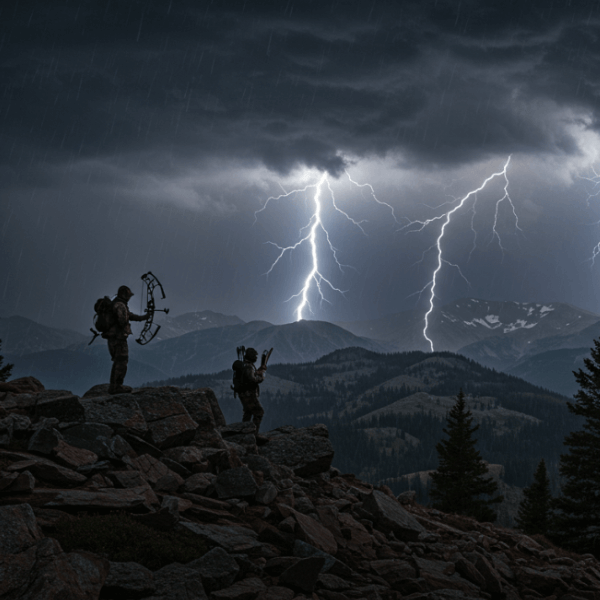
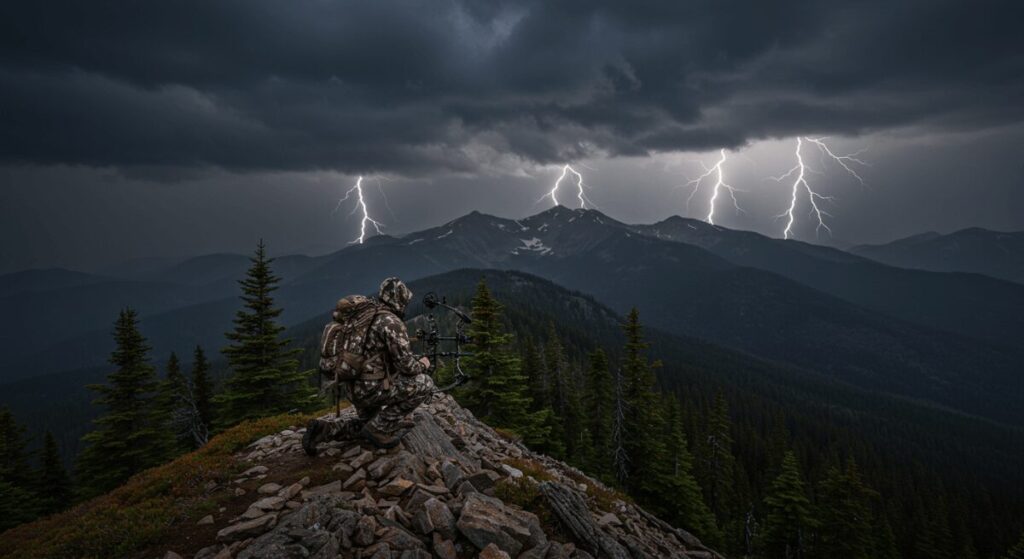
When two hunters in Colorado, Andrew Porter and Ian Stasko, recently lost their lives during a lightning storm, it shook the hunting community. If you don’t know their story, they were archery hunting for elk. in the San Juan Mountains of Colorado, when they went missing. Search and Rescue teams spent days combing the rugged terrain after their GPS device stopped transmitting. Eventually their bodies were found, with signs of burn damage and melted clothing that pointed to a strike.
I also read about a separate case in Florida where another hunter was struck and killed while fishing. These tragedies spark the same questions again and again. Could they have been avoided, and what can we learn?
The truth is, lightning is one of the most underestimated dangers in the outdoors. People prepare for bears, for getting lost, for broken gear, but lightning often gets brushed aside as “just a storm.” Yet every year, hunters, hikers, and anglers are killed by strikes or by the exposure and confusion that come with being caught out unprepared.
This isn’t about blaming the victims. It’s about learning from what happened so others might come home safe.
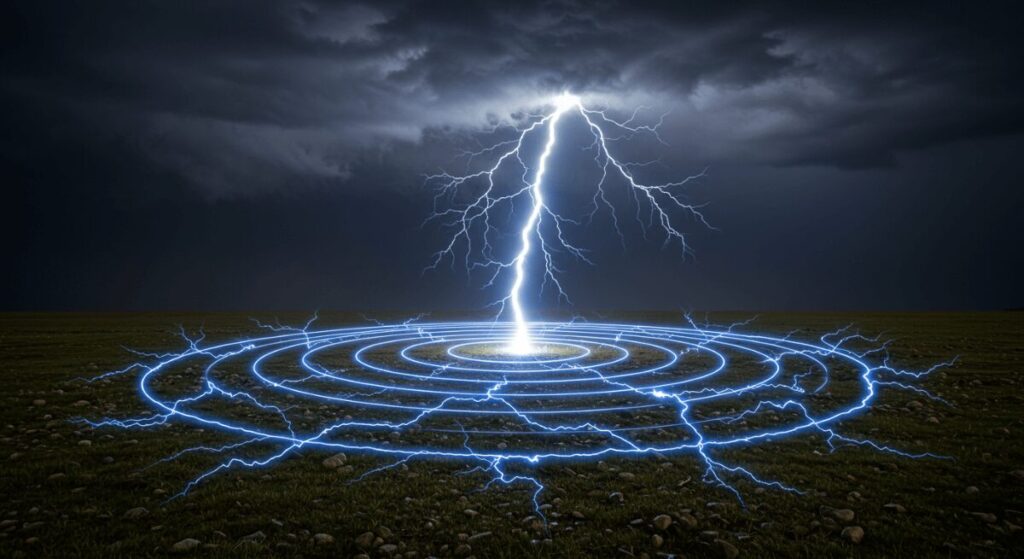
Understanding Lightning Risk
Lightning doesn’t need a direct strike to kill. A bolt hitting the ground nearby can travel through the earth, water, or even trees, delivering enough current to stop a heart. The danger zone is much larger than most people realize. What surprises many is that lightning often takes unpredictable paths, jumping from one object to another or radiating outward through the ground in powerful surges. A strike that hits a tree or a ridge hundreds of feet away can still reach you in an instant through roots, moisture, or even the very soil beneath your boots.
One simple way to judge distance is the thunder counting rule. When you see a flash, start counting the seconds until you hear thunder. Divide that number by five to estimate how many miles away the strike was. If thunder follows within 30 seconds, the lightning is within six miles and you need to seek shelter immediately. That may sound like a comfortable distance, but lightning can travel farther than most people think. It has struck hikers and boaters well before the storm arrived overhead.
Remember, lightning can strike 10 miles or more from the storm itself, even under blue sky at the edge of the clouds. The old saying holds true, and it has probably saved more lives than any high tech device ever will: if you can hear it, you’re close enough to be hit.
The Psychology of Storm Decisions
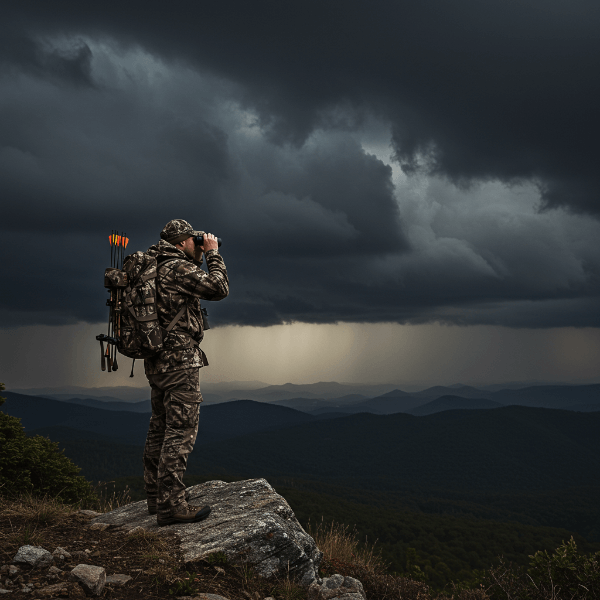
One of the most dangerous parts of a storm isn’t the lightning itself, but the way our minds try to explain it away. Psychologists call it Normalcy Bias, the tendency to assume that things will stay the same as they always have. If every other afternoon storm in the mountains passed without trouble, our brains tell us this one will too. Add to that Optimism Bias, the quiet voice that says, it won’t happen to me, and you have the perfect recipe for hesitation at the worst time.
That hesitation often looks small: one more cast, one more ridge to glass, ten more minutes before heading down. But those moments stack, and when lightning is in play, hesitation can be deadly. Recognizing that your own mind will try to downplay risk is the first step to overriding it. If you hear thunder, that’s the moment to act, not the moment to negotiate with yourself.
What To Do If You’re Caught Outside
If you can’t get to a building or vehicle, there are still steps you can take to improve your odds:
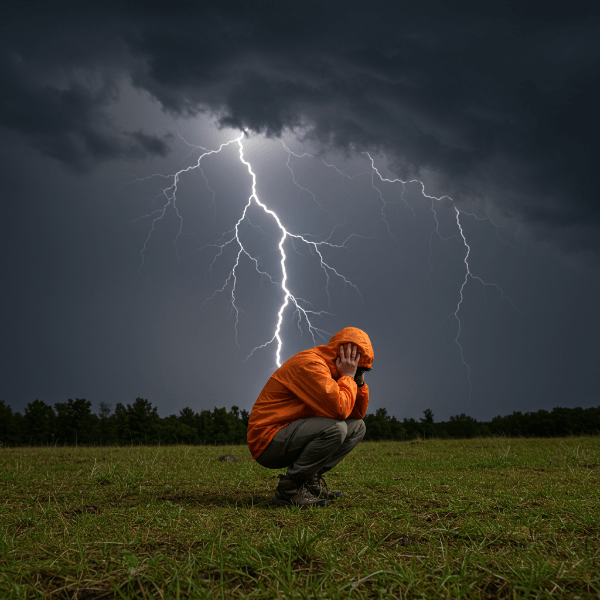
- Spread out. Do not cluster together. If one person is struck, others need to remain capable of giving aid. Keep at least 50–100 feet apart.
- Do not hold hands, not even with children. It feels protective, but if lightning strikes one person, the current can pass directly through to the other. Keep kids close enough to watch but separate enough to stay safe.
- Avoid tall objects. Don’t huddle under a tree, power pole, or ridge edge. Lightning often seeks the highest point.
- Crouch properly. If you’re in the open, get into a crouched position: squat low with your feet close together, balance on the balls of your feet, touch your heels together, tuck your head, and cover your ears. Do not lie flat as that increases surface contact and current exposure.
- Minimize contact with the ground. The goal is to reduce the path electricity has through your body.
- If you are carrying a rifle, fishing rod, trekking poles, umbrella, metal frame pack or anything metal, put it down and move away from it. Do not hold onto it during a storm.
- Avoid fences, gates, or long metal structures. Lightning can travel surprising distances through wire and metal, reaching you even if the strike is far away.
- If you find yourself on a hillside or ridge, get lower as quickly as you safely can. Do not wait. Lightning favors high ground, and staying put increases your risk.
- Avoid caves or alcoves. Lightning can travel through rock and ground, reaching inside and striking people who think they’re sheltered.
If someone is struck, act fast! Lightning victims don’t carry a charge, so it’s safe to touch them. Begin CPR immediately if there is no pulse or breathing. Many lives have been saved because someone nearby refused to give up.
Finding Safer Ground During a Lightning Storm
When thunder rolls and there is no building or vehicle nearby, the goal is not to find the perfect place but the least dangerous one. True safety comes from being inside a fully enclosed metal topped vehicle or a solid building, but deep in the backcountry those options usually do not exist. Out there, you have to think in terms of safer instead of safe.
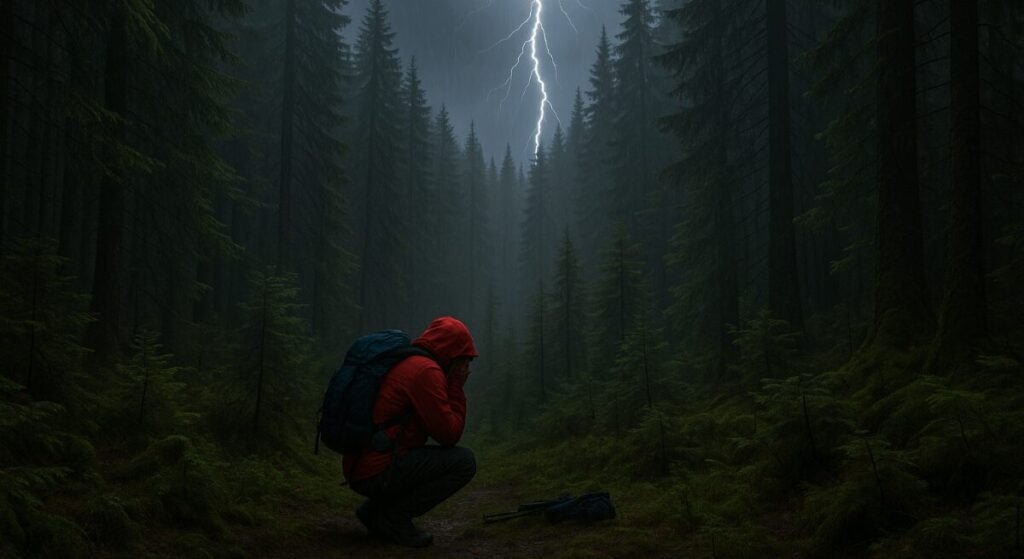
Avoid ridgelines, open fields, and the edges of meadows where you become the tallest object. Stay away from solitary trees, poles, or rock spires that can draw strikes. Move instead to a lower area with even terrain, such as a shallow valley or a depression surrounded by trees of similar height. Choose ground that sits a little higher than running water, since lightning can travel through wet soil, creeks, and streams.
If you have time, clear the ground of sharp rocks or branches. People who experience nearby strikes or ground current sometimes get thrown or jolt involuntarily. Clearing the area keeps you from being cut, impaled, or bruised if that happens. Get into the lightning safety position. Balance on the balls of your feet, touch your heels together, tuck your head, and cover your ears. Place any metal gear within eyesight but a fair distance away.
There is no perfect shelter in the wilderness during a lightning storm, but your choices still matter. Each small decision, getting lower, spreading out, and reducing contact with the ground, shifts the odds in your favor. The goal is not comfort. The goal is to stay alive until the sky clears.
A Lesson From the Lake
Picture this: you’re out fishing, chest-deep in the lake, wearing your favorite waders and gripping the rod you trust most. The mountain air is fresh, the water is calm, and you’ve been waiting all week for this quiet moment. The world feels right, until a storm creeps over the ridge. You know you should head for shore, but the thought of one last cast keeps you there. Just one more, you tell yourself.
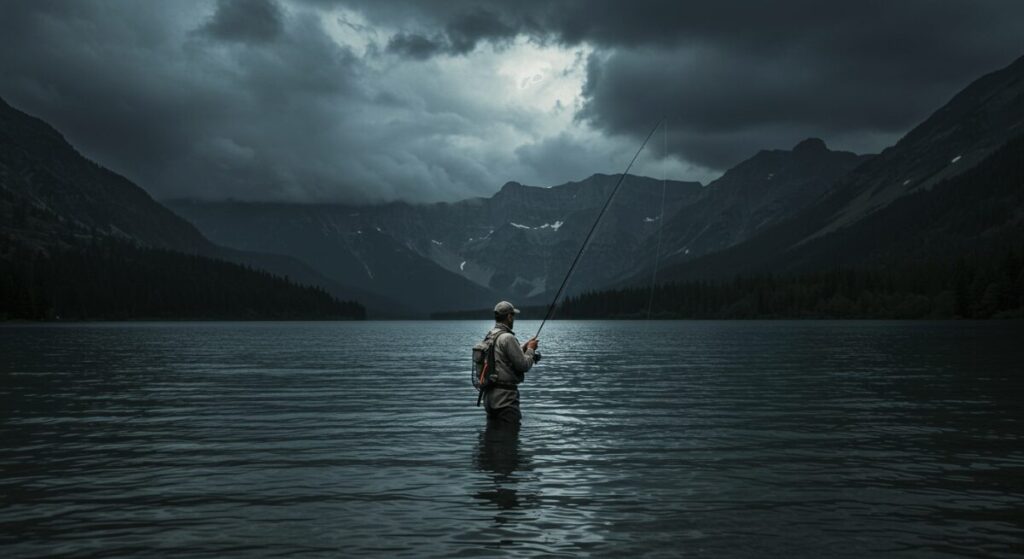
The sky rumbles. The air feels different, charged, alive. Before you can reel in, there’s a blinding crack and everything stops.
I learned this lesson young when a friend’s father stayed out for that one last cast. Lightning struck the lake. He never made it back. The story spread quietly through our small town. He wasn’t reckless, just human, caught between calm water and a storm that moved faster than anyone expected.
Water conducts. It doesn’t matter if it’s a lake, a river, or even a puddle. Electricity spreads fast and far, racing across the surface in every direction. You don’t have to be anywhere near the strike for it to reach you. The same water that gives life to fish and forests becomes a perfect highway for lightning’s raw power. It can move through your boots, your rod, or the water around you in an instant, with no warning and no mercy.
If a storm is rolling in, get out immediately. Don’t wait to see where it hits, don’t convince yourself it will pass. Head for shore, drop your gear if you have to, and get low. The fish will still be there another day. Your family and friends are what’s waiting for you now. No fish, no trophy, no story is worth trading for your life.
The Role of Preparedness
Being prepared doesn’t mean carrying the whole sporting goods store on your back. Hunters and hikers know every ounce matters. The essentials against storms and exposure are few:
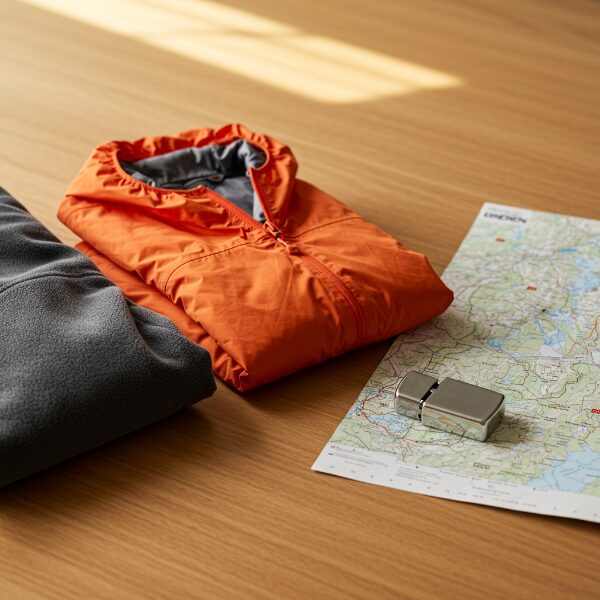
- A reliable rain layer – lightweight, packable, but real protection.
- An insulating layer even if the day starts warm. Temperatures crash fast in rain and fog.
- A fire-starting method – lighter, matches, ferro rod. Wet and cold without fire is a death sentence.
- Navigation tools beyond your phone. A map and compass weigh little.
There’s really no gear that can keep you safe from lightning. When it strikes, there’s nothing you can wear or carry that will stop it. But being prepared still matters, because survival often depends on what happens after the storm or while you wait it out. If you have to hunker down in a safe place until it passes, the right gear can make the difference between discomfort and danger. A small fire kit can keep you warm through a long storm, and rain gear can help you stay dry enough to move fast when it’s time to get out. The goal is to avoid becoming so cold and wet that you’re tempted to stop in unsafe areas. Keep moving until you find true shelter.
Rain gear matters not just for warmth, but because it allows you to keep moving downhill instead of stopping. Cold rain tempts people to hunker down under trees or rocks, but mobility toward safer ground is almost always the better choice.
It doesn’t take much gear to tip the odds back in your favor.
My Original Theory About the Colorado Hunters
When news first broke about the two hunters in Colorado, I had several people ask me what I thought had happened. I saw plenty of speculation, and I pieced together my own thoughts based on experience. At the time, this was my theory.
I believed they went out for the day with their packs, gear, and clothing ready for the weather. When a storm came in, they returned to their vehicle, peeled off their wet clothes, and left them inside. That explained why wet clothing was later found in their car.
I thought they had changed into dry clothes and waited out the storm in the truck. Then, with the rain appearing to pass and daylight running short, they likely decided to head out for one more quick scout. I pictured them grabbing their bows and leaving their heavier gear behind, thinking they could slip out for a fast check before dark.
In my mind, they were not expecting another storm to roll in. They made it about a mile out when rain and heavy fog returned. Without their packs, extra layers, or survival tools, they were caught unprepared. The fog made navigation back to the vehicle nearly impossible.
By nightfall, they were wet, exhausted, and exposed. I believed hypothermia set in, a rapid spiral that robs judgment, drains strength, and leaves many victims simply wanting to lie down and sleep. I imagined them trying to hunker down, only to succumb in the cold.
At the time, I didn’t think this theory was judgmental. From all accounts, they had done research, were prepared hunters, and knew the land. But I believed they made one bad call in one bad moment, and that it cost them their lives.
I still stand by what I said then: it could happen to any of us.
Why I Shared That Theory
I put those thoughts out because I wanted others to pause and reflect. The mountains don’t forgive. Conditions shift quickly. A single choice, leaving gear behind, misjudging the weather, stretching daylight just a little further, can snowball into tragedy.
Even though more details have come out since, my original reflection still holds value. It shows just how thin the margin can be.
When I came to that conclusion, it wasn’t pulled out of thin air. This wasn’t a wild guess, but the most likely chain of events given the circumstances. I had done a fair amount of research on Andrew Porter and Ian Stasko’s story, at least what was available to the public and paired that with my own experience as a hunter and outdoorsman. I’ve seen how people act when storms roll in, I’ve read countless reports, case studies, and news articles, and I’ve witnessed the same patterns repeat themselves over and over. In fact, scenarios like this are far more common than most realize. It’s part of my job to notice them, to study them, and to share what I learn so others can avoid the same fate.
Lightning Safety Lessons for Hunters and Hikers
So where does this leave us? With a few lessons worth taking to heart:
- If you can hear thunder, you are in the strike zone. Don’t wait until it feels “close.”
- Crouch properly, spread out, and avoid tall cover. These aren’t just tips, they’re survival moves.
- Carry the minimal essentials every time: rain layer, insulation, fire, navigation. Don’t gamble on good weather.
- Do not hold metal gear during a storm. Put it down and move away from it. Avoid ridgelines and caves. Keep moving downhill if possible.
- If someone is struck, CPR can save their life.
And maybe most importantly, respect that the mountains don’t care how skilled, strong, or experienced you are. Nature sets the rules.
Umbrellas, Trees, and Holding Hands
Two young brothers were caught in an afternoon storm. The older, barely a teenager, held an umbrella, trying to shield his little brother from the rain. The younger clung to his brother’s hand, trusting him completely. They ran for what looked like the safest place, a tree. The thunder rolled closer, but they felt safer huddled together under the branches, rain dripping from the umbrella above them.
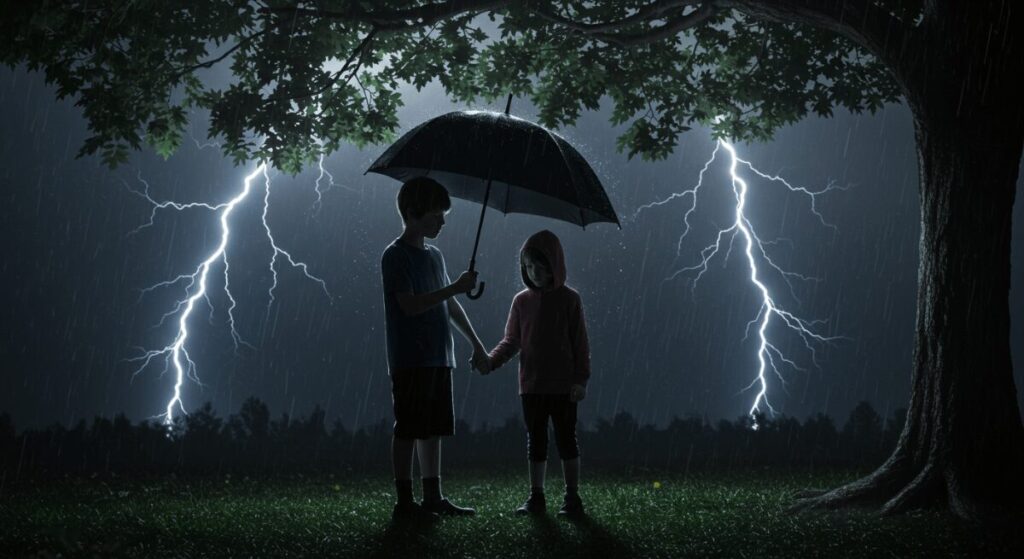
Then the world flashed white. Lightning struck the tree, leapt to the umbrella, and surged through the older brother. Because their hands were clasped, the current flowed into the younger. When it was over, one boy survived. One did not.
This heartbreaking tragedy happened in a neighboring town where I grew up, and I have never forgotten it. It is a painful reminder that trees and umbrellas do not offer safety from lightning. As difficult as it feels, even holding hands can put two people at greater risk. Stay close enough to protect, but separate enough to keep each person safe.
The Hidden Aftermath of Lightning Strikes
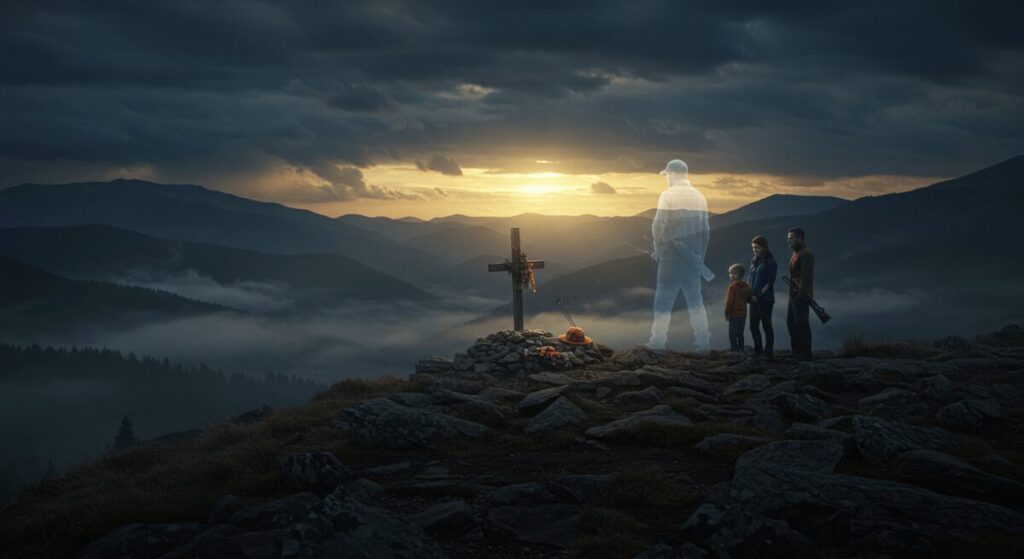
Surviving a strike isn’t the end of the story. For many, it’s only the beginning of a different kind of struggle. Lightning can leave behind a lifetime of invisible scars, memory loss, nerve damage, chronic pain, and heart problems that change the way a person lives every day. Some survivors describe it as being rewired, never feeling quite the same again.
For families who lose someone, the aftermath is deeper still. It’s the empty chair at the table, the hunting pack left hanging in the garage, the silence where laughter used to be. It’s the long, quiet moments when the realization hits again that someone they love isn’t coming home. Those ripples of loss spread far beyond the mountain where it happened. They touch parents, siblings, children, friends, entire communities bound by grief and memory.
Preparedness isn’t about fear. It’s an act of love. Every time you throw that rain shell in your pack, double-check your gear, or decide to head down when thunder rolls, you’re making a choice that protects more than just yourself. You’re choosing to spare the people who care about you from that same ache, that same silence.
Andrew Porter and Ian Stasko’s names will not fade with the storm that took them. They are part of the mountains now, a reminder carved into Colorado’s wild places of how quickly conditions can turn and how precious each return home really is. May their families find peace in knowing that through their story, others will live. Their loss has become a lesson written in lightning, one that will guide countless others safely back to those who love them.
Why Lightning Safety Matters for Hunters and Outdoorsmen
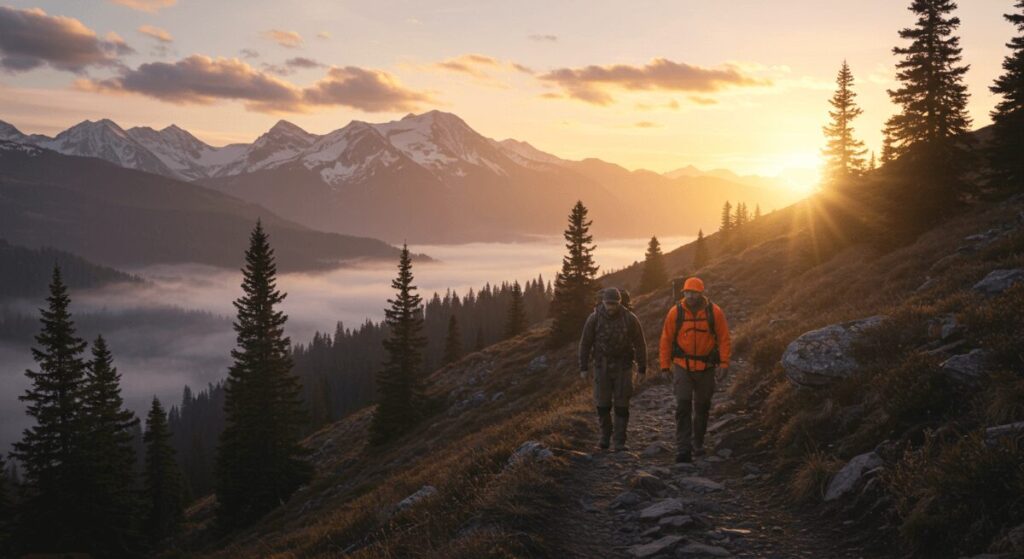
The deaths of hunters in Colorado and Florida are tragedies. Families are grieving, and nothing written here can make that better. But if even one hunter, one hiker, or one outdoorsman reads this and chooses to carry that extra layer, pay attention to thunder counts, or crouch instead of lying flat, then some good can come from loss.
That’s why I teach, why I write, and why I share these reflections. Not because I have all the answers, but because the outdoors has taught me hard lessons. I want those lessons to bring people home.
Note: The images used in this article are AI-generated for illustrative purposes. The events, stories, and lessons shared here are real, drawn from personal experience, research, and true accounts of lightning tragedies.
About the Author
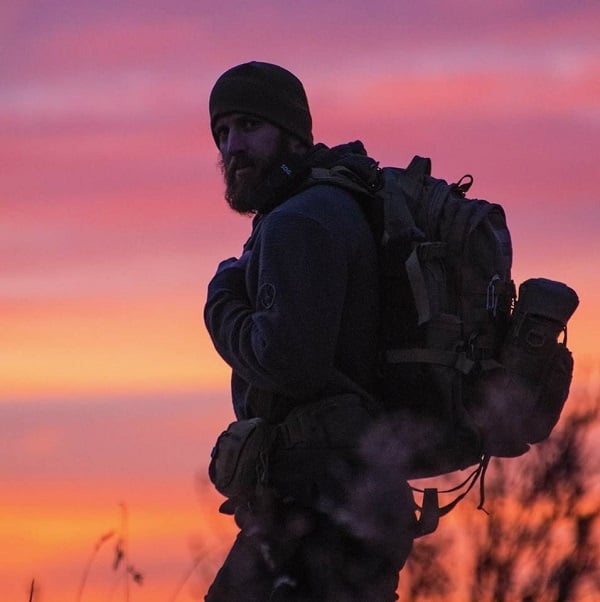
Jason Marsteiner is the founder and lead instructor at The Survival University, where he’s turned his obsession with staying alive into a mission to teach real-world survival skills. Forget fancy gear, Jason’s all about the know-how that gets you through the wild or a city crisis. A published author of Wilderness Survival Guide: Practical Skills for the Outdoor Adventurer, he’s distilled years of hard-earned wisdom into lessons anyone can use.
Raised in Colorado’s rugged mountains, Jason’s survival chops were forged in the wild—from Missouri forests to Arizona deserts to Costa Rican jungles. He’s navigated it all with next to nothing, earning creds like Wilderness First Responder (WFR) and SAR tracking along the way. He’s trained thousands to keep cool when 911’s out of reach, proving survival’s not just for grizzled adventurers, it’s for hikers, parents, and city slickers alike.
Jason’s mantra? Everyone should make it home safe. When he’s not running courses, he’s designing knives, mentoring newbies, or chilling in the city like the rest of us, always sharpening the skills that turn panic into power.
Leave a Comment
Lightning, Hunting, and the Harsh Lessons of the Mountains
When two hunters in Colorado, Andrew Porter and Ian Stasko, recently lost their lives during a lightning storm, it shook the hunting community. If you...
- survival training
- lightning strikes
- survival skills
- hunter education
- risk management
- nature safety
- weather awareness
- camping safety
- hiking safety
- outdoor education
- lightning safety
- mountain safety
- Colorado hunting
- electrical storms
- thunderstorm awareness
- outdoor safety
- wilderness survival
- backcountry safety
- storm preparedness
- hunting safety
